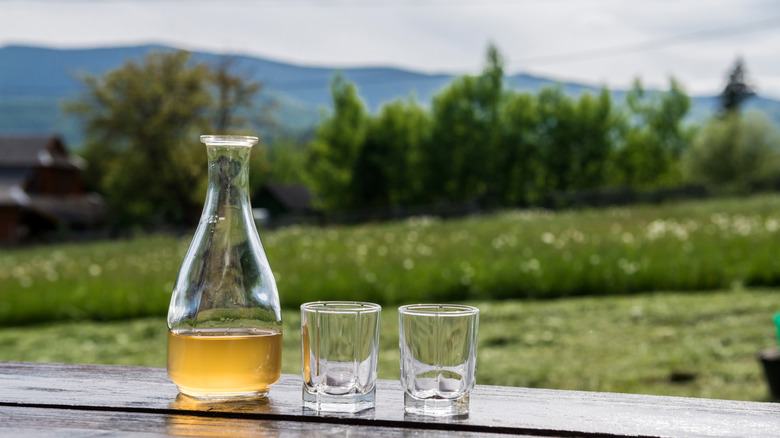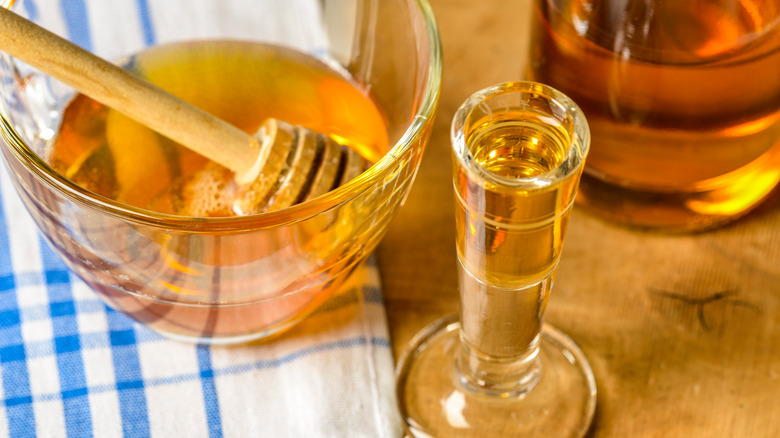Here's How Honey Wine Is Different From Mead
Honey is cherished for its flavor as much as it is for its consistency. Its viscosity is its trademark, but honey's floral notes — subtler than white sugar — add a flavor that blossoms on the tongue, imbuing whatever it's flavoring with a rich, deep sweetness.
Wine Country notes that while wine is often recognized as the inaugural alcoholic drink, that distinction may actually go to mead, a "fermented beverage made of honey, water, and yeast" that transcends categorization to become its own entity altogether. Also called honey wine, mead begins simply enough, with just water and honey, plus yeast to convert the sugar and ferment the combination. There are variations within mead, much like you'd see in wine. Some other types of mead include melomel, metheglin, braggot, acerglyn, and bochet, which all utilize different types of honey, fruit juices, herbs, spices, sweeteners, and grains.
Mead is a libation that has been enjoyed for centuries, but its origins aren't exactly clear. A similar beverage is referenced in some ancient Greek texts. There is also evidence that Nordic communities may have drunk a mead-like beverage in celebratory situations, and that some African tribes partook of a honey-based fermented drink about 30,000 years ago. Liquor even notes that Chinese pottery vessels from 7000 BC(!) show us that mead fermentation may have been happening then, too, but acknowledges that it may have been a matter of happenstance involving "rainwater-flooded beehives."
Are mead and honey wine interchangeable?
Essentially, "honey wine" is a bit of a misnomer because mead isn't actually wine at all. Using the term "mead" clearly delineates the beverage from wine, beer, liquor, or cider, whereas calling it "honey wine" blurs those lines. We also like its alternate name, which it sometimes went by in the olden days: ambrosia.
Furthermore, Flavor Man notes the honey in mead must represent "the largest percentage of the starting fermentable sugars by weight," which also sets mead apart from both wine and beer. Mead also ages longer than beer — as long as 3 years! Eat This, Not That sums it up well: "grapes make wine, grain make beer, apples make cider, honey makes mead."
Honey isn't one-note; it can vary wildly in flavor and sweetness, and honeys like wildflower, blackberry, or buckwheat can result in a more heady mead, according to Liquor. Mead also comes sweet, dry, still, or sparkling, just like wine.
Believe it or not, the term "honeymoon" actually comes from mead. Many newlyweds drank the beverage as a means of granting good luck and fertility, according to Wine Country. The "moon" component is due to the fact that the couple was directed to drink mead for a moon (aka a month) to guarantee the best "results," per Flavor Man. So, whether you call it mead or honey wine, this fermented drink is a sweet sip with a whole lot of history.

